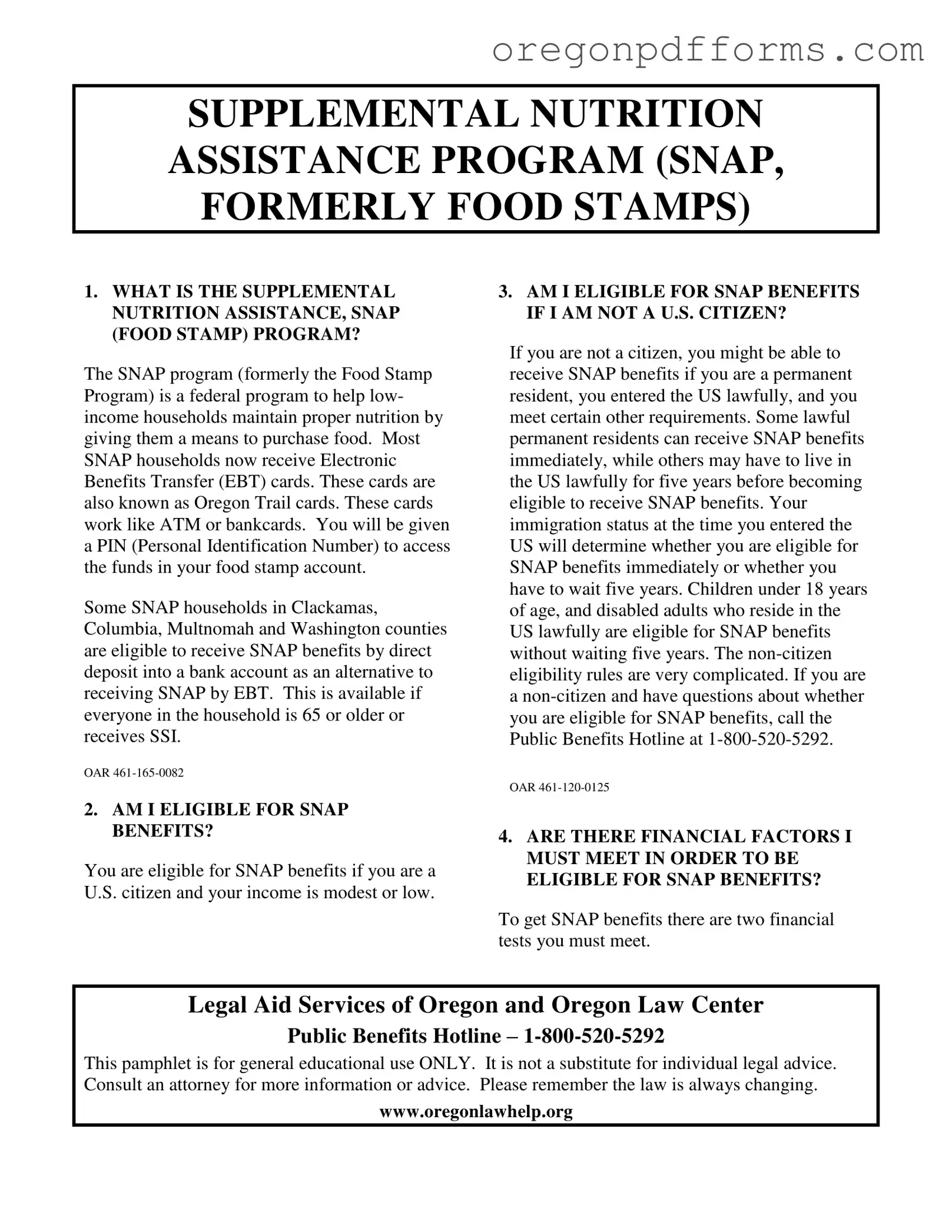1. What is the Supplemental Nutrition Assistance Program (SNAP)?
The SNAP program, previously known as food stamps, is a federal initiative designed to assist low-income households in purchasing food. Most participants receive benefits through Electronic Benefits Transfer (EBT) cards, commonly referred to as Oregon Trail cards. These cards function like ATM or bank cards, allowing users to access funds designated for food purchases. In certain counties, eligible households may receive benefits via direct deposit into their bank accounts, especially if all members are 65 or older or receive SSI.
2. Am I eligible for SNAP benefits?
To qualify for SNAP benefits, you must be a U.S. citizen with a modest or low income. If you meet these criteria, you can apply for assistance to help with food costs.
3. Can non-citizens receive SNAP benefits?
Non-citizens may qualify for SNAP benefits if they are permanent residents or entered the U.S. lawfully. Some permanent residents can access benefits immediately, while others must wait five years. Children under 18 and disabled adults residing lawfully in the U.S. can receive SNAP benefits without a waiting period. Given the complexity of these rules, non-citizens should contact the Public Benefits Hotline at 1-800-520-5292 for guidance.
4. What financial factors determine SNAP eligibility?
Two main financial tests assess eligibility for SNAP benefits:
-
Resource Test:
Your total resources, including checking and savings accounts, cannot exceed $2,000. For households with a member aged 60 or older or disabled, the limit is $3,250. Some individuals may be “categorically eligible,” meaning they do not have to meet these resource tests if they receive certain public benefits.
-
Income Test:
You must meet specific income limits based on your household size and situation. Special rules apply for self-employed individuals, allowing them to exclude certain business expenses from their income calculation.
5. How much will I receive in SNAP benefits?
Your SNAP benefits depend on your household size and income, along with various deductions that can increase your benefits. Deductions may include:
-
Dependent care costs
-
Medical expenses for those aged 60 or older or disabled
-
Earned income deductions for working individuals
-
Standard deductions based on household size
-
Child support payments for children not living with you
-
Shelter costs for housing and utilities
6. How do I apply for SNAP benefits?
To apply, contact your local Department of Human Services (DHS) office. If you have minor children or are an adult without a disability, follow the standard application process. If you are elderly or disabled without minor children, reach out to the Aging and People with Disabilities Office. If you need benefits quickly, consider applying for expedited SNAP benefits. An interview will be required during the application process, and you must provide necessary documents like proof of income and citizenship.
7. What other eligibility requirements exist for SNAP benefits?
Eligibility may also depend on your work status. If you are a post-secondary student, you can only receive benefits if you meet specific criteria, such as being approved for a work-study job or participating in job training programs. Additionally, there are work requirements for maintaining eligibility, including accepting job offers and working a minimum number of hours per week.
8. What should I do if my SNAP benefits application is denied?
If your application is denied, you will receive a notice explaining the reasons. You have 90 days to request a hearing if you believe the decision was incorrect. To do so, fill out a hearing request form available at your local DHS office or online. It's advisable to submit this form promptly and keep a receipt for your records.
9. How do EBT (Oregon Trail) cards work?
Once approved for SNAP benefits, you will receive an EBT card. This card allows you to access your benefits for food purchases. When shopping, you will swipe your EBT card and enter your PIN at checkout. The total cost of eligible food items will be deducted from your account. It's essential to keep track of your balance and safeguard your card and PIN to prevent unauthorized use.
